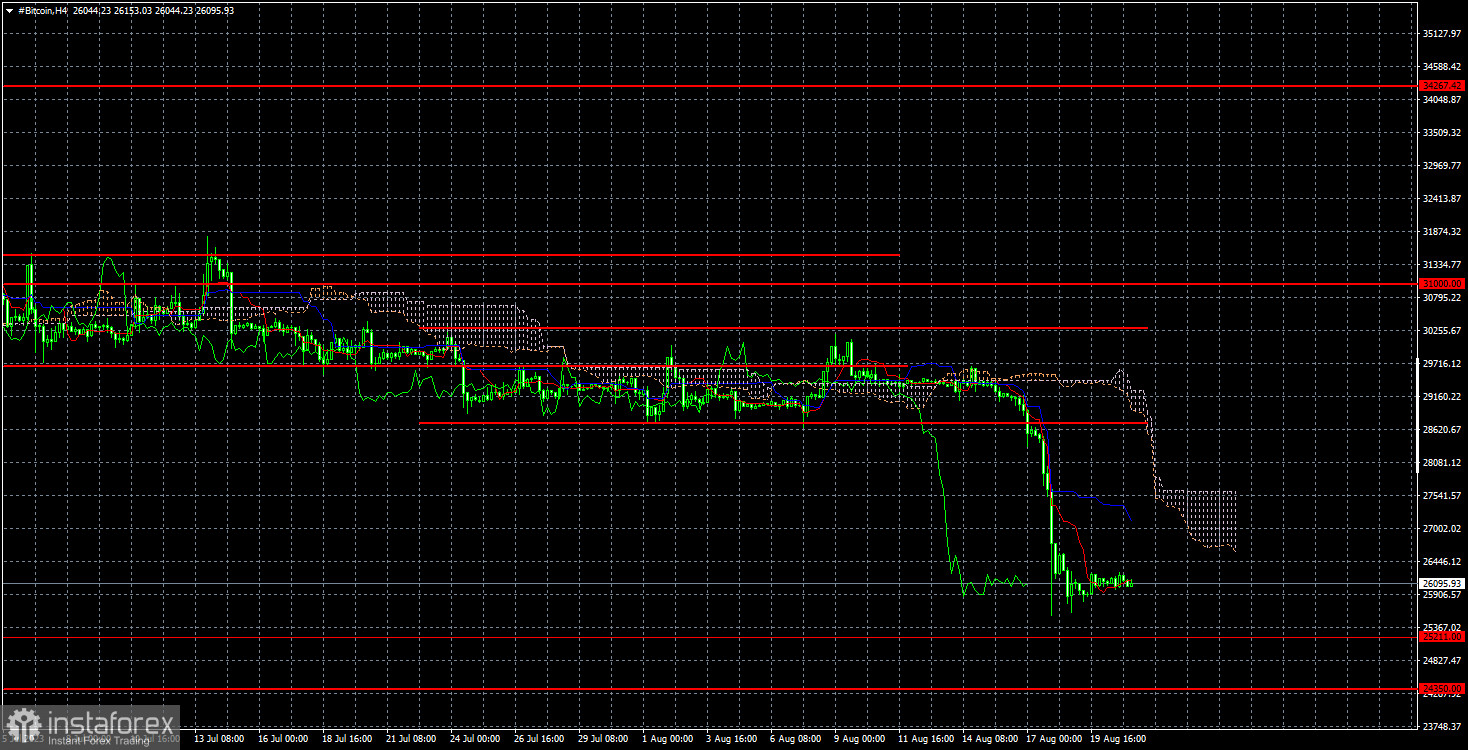
On the 4-hour time frame, Bitcoin broke out of the second sideways channel that we mentioned last week, and then declined sharply. This provided traders with ample time to initiate short positions. As of the moment of writing, the price was near the $25,211 support level by a mere few hundred dollars, but we anticipate that this level will likely be breached. This support should be factored in along with the $24,350 level. Therefore, a bounce from this zone could signal the beginning of an upward trend, whereas breaking below might suggest further bearish momentum for the leading cryptocurrency, which many are still forecasting to reach at least $100,000.
Tom Lee, the founder of the analytics platform Fundstrat, shares this sentiment. He thinks that with the U.S. Securities and Exchange Commission's approval of a Bitcoin ETF, Bitcoin's value could skyrocket to $150,000 at least. He believes that the demand for Bitcoin will surge if a Bitcoin ETF is launched. If the SEC rejects the applications, Bitcoin still holds bullish potential during its halving, according to Mr. Lee. Essentially, one might argue, even if it doesn't appreciate during the halving, it's poised for growth in the long run. We've frequently pointed out that many of these analysts are also cryptocurrency investors, inherently promoting interest in Bitcoin and other digital currencies. Without fresh capital influx, Bitcoin's growth stagnates. Hence, it might be prudent to take the bulk of these predictions with a grain of salt, possibly reducing the projected valuations by a factor for a more grounded estimate.

Max Keiser, the founder of Heisenberg Capital, believes that Bitcoin's fall is due to the rising yield of U.S. Treasury bonds. Interestingly, the Federal Reserve's (Fed) rate has been increasing for over a year and was supposed to be the main reason for Bitcoin's decline. However, Bitcoin had already fallen by 80% before the Fed's rate hike, meaning the market had accounted for this factor. So why Bitcoin suddenly reacts to rising deposit rates and treasury yields, even though the Fed is nearing the end of its tightening cycle? In general, even experts' explanations don't inspire much confidence, let alone their predictions. We believe that we should still rely on technical analysis. We have identified a crucial zone that can help determine Bitcoin's future direction.
On the 4-hour timeframe, the cryptocurrency continues to decline, as we anticipated. Since the price has left two sideways channels, we now expect a further drop of $500-$1,000. Of course, it's too late to sell now; we need to wait for new signals. And before they emerge, we might see several more weeks of sideways movement, as this has been Bitcoin's typical behavior in recent months and years. We are waiting for the $24,350 - $25,211 zone to be tested, after which we will decide on the next steps.





















